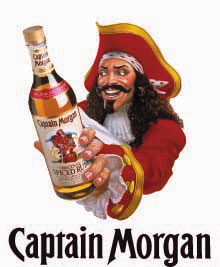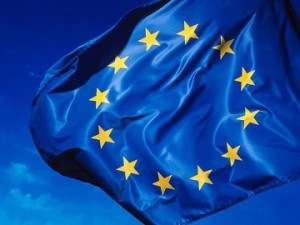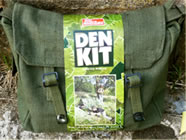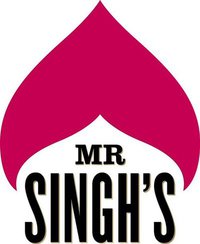
Captain Morgan wielding his packaging assets
A few weeks ago I had the privilege to listen to Paul Walsh CEO of Diageo, the world’s leading spirits, beer and wine company, deliver a ‘marketing’ talk at Nottingham Business School (Nottingham Trent University). It was entitled “Marketing & Communication in 2010 – Responding to the New Stakeholder Condition” and was such a powerful & interesting insight, I thought I’d provide you with an overview and share some of my thoughts with you.
Diageo is the proud owner of some of the biggest ‘power brands’ on the planet, such as Smirnoff, Johnnie Walker, Guinness, Baileys, J&B, Captain Morgan, Jose Cuervo, Bushmills & Tanqueray. Both Guinness and Johnnie Walker have been around for over 200 years and Bushmills almost 400 years. Some feat! and a tremendous bank of heritage on which to pull (or push – or whatever you like really!).
Walsh is a fine orator, who is passionate about his brands and company. He talked about the basis of all iconic brands being ‘great products’ driven by FACE (Flair, Agility, Consumer insight and then Executed flawlessly). But he also acknowledged that the global marketplace is constantly evolving which affects the way we live and interact with our favoured brands. At the same time, broadband is proving to be the biggest technological development since the introduction of television. As the world ‘goes on-line’ a whole new media stream has opened up to feed a young and dynamic market who have ‘bags of energy’ and want to ‘party’. Walsh highlighted this momentous change by showing the video Shift Happens – some mind-blowing & thought provoking figures (I’m sure you will agree).
So the ‘rules of engagement’ have changed, and indeed are constantly evolving. Advertising spend in traditional media such as magazines, newspapers and TV has ‘nose-dived’ and has been diverted into new media, where Diageo, and other companies for that matter, have “up-weighted their spend in the digital space” and enjoyed much bigger ‘bangs for their buck’, realising huge cost savings.
It is clear that Diageo have become masters of leveraging the new technology. Key to their success, according to Walsh, can be attributed to a 5-point plan:
1. Having a good product
2. Being clear about the target
3. Identifying the single most compelling benefit
4. Effectively dramatising that benefit
5. Saying and constantly repeating it through the most effective channels
Affiliated to this is the ability for brands to attract and become “participants in a conversation NOT simply involved in a top-down message”. Metaphorically, he likened this to a change from a game of ten-pin-bowling, with a one-ball strike to a game of pinball, banging, bouncing, to-ing and fro-ing through a maze of buffers and pins. In this new media world, Walsh alluded to 3 types of people:
Passive participants – Those who are completely passive and soak up all of the information ‘thrown at them’ via static websites
Engaged participants – people who are engaged and share information via social media platforms
Active participants – those who voraciously add content on-line and are hugely influential
These 3 groups of people seem to inhabit this digital world in approximate ratios of 90 : 9 : 1 (respectively). It is the small group of active participants have been key to Diageo’s new media brand success. By influencing these people in this sector they have turn their brands from on-shelf icons to (almost) living and breathing entities.
A classic example of this success is Captain Morgan, which has rocketed over recent years and now holds a prestigious No2 position for premium rum brands. The driver behind this has been the building and grooming of the ‘Captain’ icon as a ‘living legend’. This hasn’t happened by accident. A carefully orchestrated campaign has evolved through the ‘Captain’s Cup’, video and photo ‘collateral’ and word-of-mouth – driven by social media. The Captain has a certain physical stance or ‘pose’ and when an interpretation of that ‘pose’ was ’struck by a famous US NFL football star on the pitch during the Super-bowl, it took on a completely new iconic dimension. There followed a series of copycat ‘poses’ by a number of esteemed brand advocates, including David Letterman on his prime-time TV show. Media-savvy Diageo capitalised on this by offering a $10,000 prize to famous people striking the pose in public places & at high-profile events, all building on the character of ‘The Captain’ and acting s a ‘viral’ growth driver for the ‘living legend’. It has proved a very cost-effective way of marketing.
As an aside, it is interesting to note that this type of ‘non-sponsorship’ could be classed as a more passive form of ‘ambush marketing, which is actually very topical at the moment. In the South African World Cup this week (14th June), 2 Dutch women were arrested for ambush advertising and 36 women ejected from one of the stadiums when they were spotted wearing short orange dresses made by the Dutch brewery Bavaria, in conflict with Anheuser-Busch’s Budweiser who are the official beer of the event. It led to quite a fuss and ITV media pundit Robbie Earle was sacked from his role when it was claimed by FIFA that he had sold tickets meant for family and friends on to the Dutch beer company.
Getting back to Diageo, another fine example of leveraging the new technology, has been the Smirnoff ‘be there’ media campaign built on a ‘viral’ marketing platform. Here young (25-30 yr old) party-goers were encouraged, via social networking sites like Twitter & Facebook, to provide ideas on their perfect party events – a party that they would remember for all time – to have ‘been there’. Diageo then picked the best ideas, provided funding to hold the event and a short video was shot at each which were then posted on YouTube. Here’s an example of a Smirnoff ‘Be There‘ TV advert. These have also proved a phenomenal success for Diageo at moderate expense – a terrific Return on Investment (ROI).
So, all in all, Diageo have shown great foresight in their on-line endeavours; an area that has worked well and is sure to be developed by them further across all of their brands. If companies want to stay ‘ahead of the game’ in an increasingly fragmented market, they need to embrace and adopt new ways of working and promoting themselves (and their brands), using creativity, flair and imagination. In this respect they could learn much from Diageo.
It also goes without saying, that in these recessionary times, where marketing budgets are being slashed, left, right and centre in huge cost-cutting exercises, the time and effort invested will also reap huge benefits in cost and greater ROI…..and will also work wonders for a brands’ ’street cred’  Â Why not get in touch and see how we could help you Contact Design Cognition OR, if you’re a more hands on person why not have a look at our forthcoming Branding and Shelf Impact training course.
 Why not get in touch and see how we could help you Contact Design Cognition OR, if you’re a more hands on person why not have a look at our forthcoming Branding and Shelf Impact training course.
Chris Penfold










